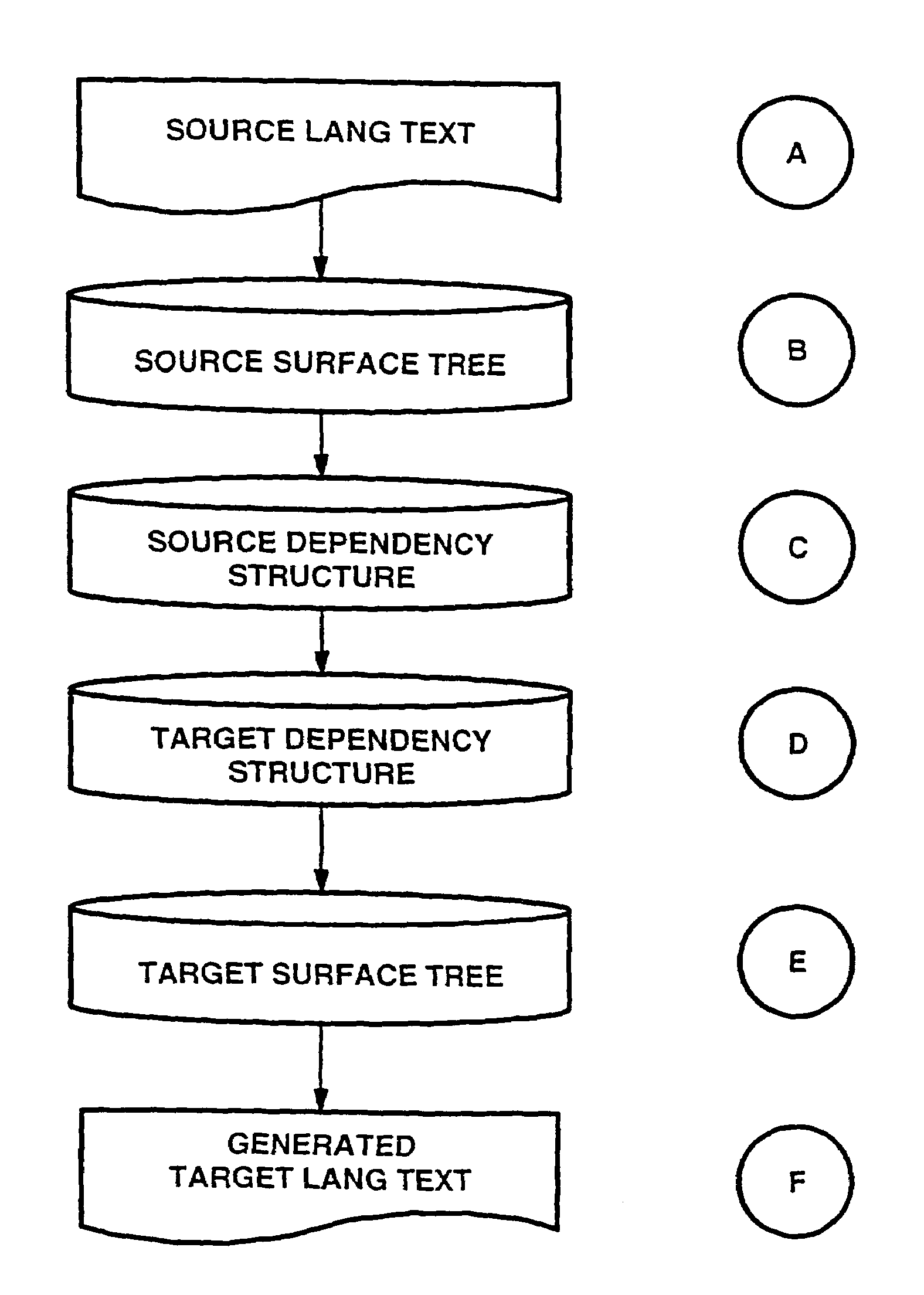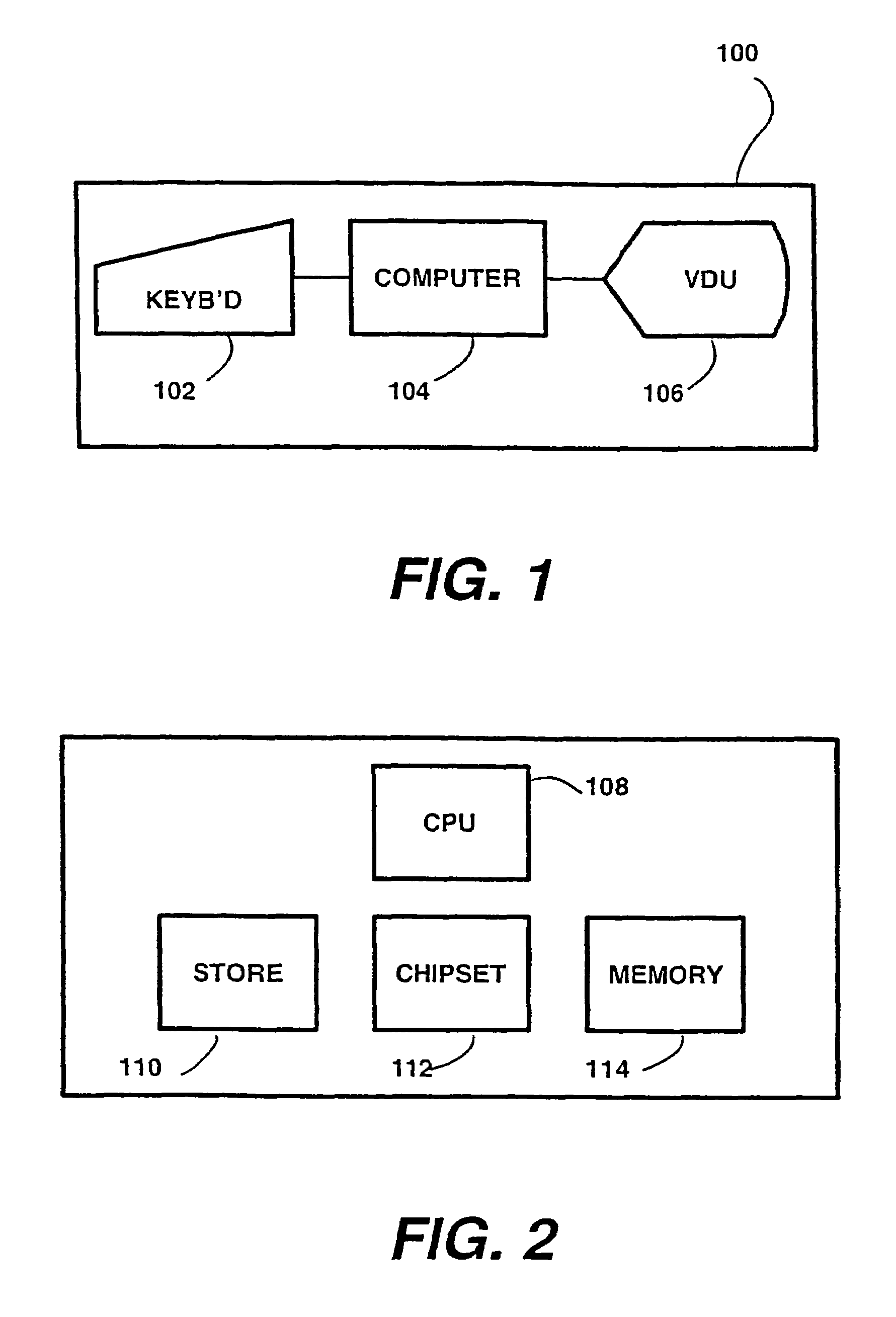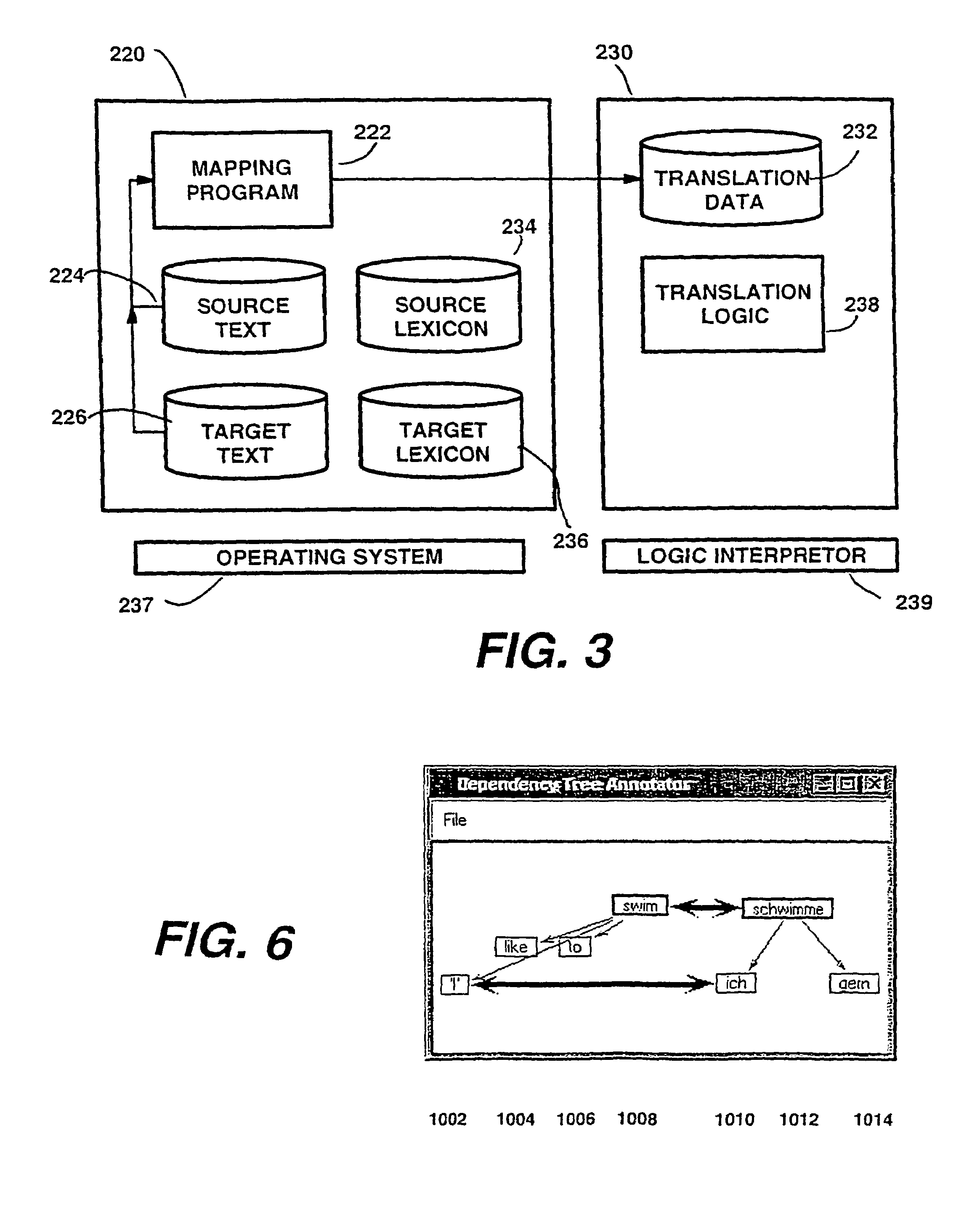Machine translation
a machine translation and machine technology, applied in the field of machine translation, can solve the problems of inability to simply align and inability to accurately match source and target language phrases
- Summary
- Abstract
- Description
- Claims
- Application Information
AI Technical Summary
Benefits of technology
Problems solved by technology
Method used
Image
Examples
first embodiment
[0051]FIG. 1 shows apparatus suitable for implementing the present invention. It consists of a work station 100 comprising a keyboard 102, computer 104 and visual display unit 106. For example, the work station 100 may be a high performance personal computer or a sun work station.
[0052]FIG. 2 shows the components of a computer 104 of FIG. 1, comprising a CPU 108 (which may be a Pentium III or reduced instruction set (RISC) processor 108). Connected to the CPU is a peripheral chip set 112 for communicating with the keyboard, VDU and other components; a memory 114 for storing executing programs and working data; and a store 110 storing programs and data for subsequent execution. The store 110 comprises a hard disk drive; if the hard disk drive is not removable then the store 110 also comprises a removable storage device such as a floppy disk drive to allow the input of stored text files.
[0053]FIG. 3 illustrates the programs and data held on the store 110 for execution by the CPU 108. ...
second embodiment
Translation Units
[0183]Having discussed the central operation of the first embodiment, further preferred features (usable independently of those described above) will now be described.
[0184]Translation components formed by the processes described above consist, for the target and source languages, of a literal head and a number of daughters which may be either literal or non-literal (i.e. the duples mentioned above), the latter representing connection points for other translation components. Using a translation component, each of the literal daughters has to match the text to be translated exactly and each of the non-literal daughters has to dominate another translation component.
[0185]The set of rules (which is what the translation unit records now comprise) were derived from example text. Accordingly, the example of a particular noun, with, say, one adjective cannot be used to translate that noun when it occurs with zero or two or more, adjectives. The present embodiment provides ...
third embodiment
ng Head / Daughter Restrictions
[0213]If, as described in the first embodiment, any daughter may select any head during translation, many incorrect translations will be produced (in addition to any correct translations which may be produced). If the generalisation process described in the preceding embodiments is employed, this likelihood is further increased. If a number of translations would be produced, it is desirable to eliminate those which are not linguistically sound, or which produce linguistically incorrect target text.
[0214]A translation system cannot guarantee that the source text itself is grammatical, and so the aim is not to produce a system which refuses to generate ungrammatical target text, but rather one which, given multiple possible translation outputs, will result in the more grammatically correct, and faithful, one.
[0215]The system of the present embodiments does not, however, have access to syntactic or semantic information specifying which heads should combine ...
PUM
 Login to View More
Login to View More Abstract
Description
Claims
Application Information
 Login to View More
Login to View More - R&D
- Intellectual Property
- Life Sciences
- Materials
- Tech Scout
- Unparalleled Data Quality
- Higher Quality Content
- 60% Fewer Hallucinations
Browse by: Latest US Patents, China's latest patents, Technical Efficacy Thesaurus, Application Domain, Technology Topic, Popular Technical Reports.
© 2025 PatSnap. All rights reserved.Legal|Privacy policy|Modern Slavery Act Transparency Statement|Sitemap|About US| Contact US: help@patsnap.com



